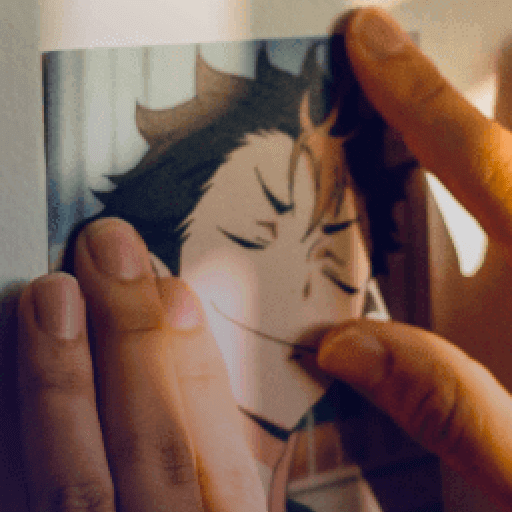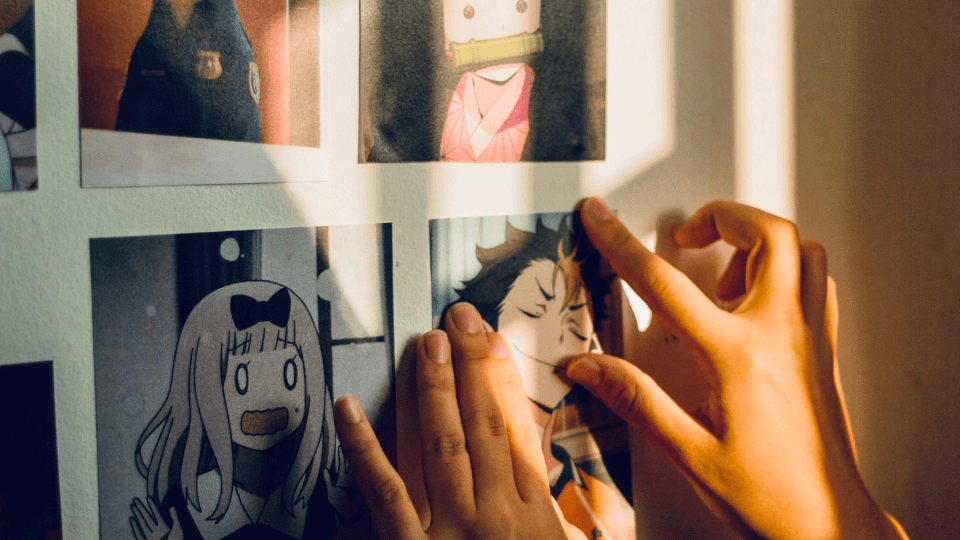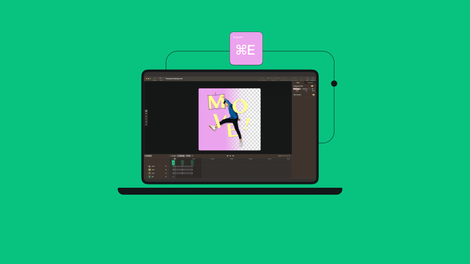
In just over a decade, Japanese animation studio MAPPA has established itself as a modern anime industry powerhouse, producing some of the biggest anime series of recent years as well as several hugely popular anime movies.
MAPPA has earned an international reputation and is now one of the most noteworthy animation studios among anime fans worldwide.
Yet MAPPA’s path to success has been anything but plain sailing – along with praise and adoration, the studio has come in for its fair share of criticism. Here, we’ll take a deep dive into the past, present, and future of MAPPA.

While the studio was officially founded in June 2011, the genesis of the company can be traced back to before this time. Veteran animator Masao Maruyama founded MAPPA at the age of 70, and the name is an acronym for Maruyama Animation Produce Project Association.
He was a co-founder of the legendary animation studio Madhouse, and he worked there from the early 1970s right up until he decided to break off and create MAPPA.
(null)
(null)
Maruyama is regarded as one of Japan's most experienced and adept producers, with a knack for finding and encouraging talented directors and key animators. His career at Madhouse was an illustrious one, but eventually, the company grew and changed to become something more corporate than Maruyama was looking for.
Maruyama wanted to work in an environment that offered more creative freedom. This desire led him to break away on his own to launch the MAPPA studio.
Jumpstart your ideas with Linearity Curve
Take your designs to the next level.
In a somewhat ironic turn of events, MAPPA’s success would lead it to grow and become a more pressured workplace with many of the same problems as Madhouse faced, but we’ll get to that.

The early days
Studio MAPPA was first set up with the mission of producing Japanese director Sunao Katabuchi's In This Corner of the World, as the film had faced production problems at Madhouse. Unfortunately, despite having a new studio in its corner, this movie didn’t see the light of day until five years after the studio had been set up.
In the meantime, MAPPA got to work on other projects.
The first production that MAPPA got out the door was an anime adaptation of Yuki Kodama's manga Kids on the Slope, directed by Shinichiro Watanabe (better known as the creative mind behind the breakout anime series and movie Cowboy Bebop).
The series is centered around music, namely the effect that jazz has on the lives of a group of seemingly disparate young people.
Kids on the Slope is quite different from a lot of anime since it’s closer to a real-life drama than a full-on fantasy world affair. The music is understandably a big feature of the production. It was put together by Yoko Kanno, the composer of the music in Cowboy Bebop.
Ready to create brand assets that pack a punch?
Visit our Academy for free marketing design courses.
The series came out in 2012, and the production's remarkable realism and richness helped set the tone for the studio's future.
From these beginnings, studio MAPPA went on to produce more all-time great anime series over the next few years and earned a reputation as a hothouse of talented artists and directors.
The first original anime series that MAPPA produced was Terror in Resonance. Like Kids on the Slope, Terror in Resonance is different from a lot of other anime productions, with an unusual artistic style and a different genre.

It’s a psychological thriller with a storyline centered around two boy geniuses who want to destroy Tokyo—unless their riddle is solved in time. The illustrated backdrops of Tokyo stand out in this animation—they’re almost photorealistic in their detail.
Besides bringing on board the directors and artists already mentioned, he also made the acclaimed anime adaptation of the Ushio & Tora manga happen.
Murayama also had Yutaka Uemura direct Punch Line, got Keiichi Satou to direct Shingeki no Bahamut: Genesis, and more. From the outside, things at the studio seemed to be going well, but this was part of the problem.

A seismic change
Masao Maruyama set up MAPPA in the first place to escape the corporate pressures and restrictions he had been experiencing at Madhouse before he left. This was the case at first. But from the outset, the company was a success, which attracted more productions, increased the workload, and meant the company needed to grow.
As time passed, the pressures increased, and Maruyama felt that he had ended up in the same situation he had left Madhouse to avoid.
In 2016, Murayama decided that he wanted to step away from MAPPA. He was 75 years old at this stage, so his desire for a change in pace is understandable. He formed a new company, Studio M2, so he could still work on projects, and he decided to hand over control of MAPPA to fresh, young talent, with Manabu Otsuka taking the helm as CEO.
As well as having a change of leadership at this time, it was also the period when MAPPA enjoyed huge success with many productions.
The breakthroughs
The studio had been enjoying a good level of success until 2016—this was the year in which it had its most significant breakthrough, Yuri!!! On Ice. This anime series wasn’t just a success in Japan. It received international acclaim.
The show is about a Japanese figure skater Yuri Katsuki and how he decided to quit his skating career after finishing last in a competition.
By a twist of fate, Yuri’s idol and fellow competitor Victor Nikiforov sees his performance and is inspired to go to Japan to become Yuri’s coach for the following season.
The show won a legion of fans for how it approached the portrayal of LGBTQ+ relationships and how well it handled issues concerning mental health.
During the series, Yuri and Victor’s relationship goes through several transitions, changing from coach and student to one where they are romantically involved. It follows Yuri’s journey and how he overcomes his mental obstacles on his path to success.
Transform Your Ideas into Animations
Dive into the world of animation with Linearity Move. Perfect for beginners and professionals alike, our course guides you through creating stunning animations for any purpose.
Yuri!!! On Ice was groundbreaking because it realistically told the story of Yuri and Victor’s relationship.
(null)
(null)
On the downside, reports emerged that the working conditions in the studio MAPPA during the production of the series were far from ideal, with very tight deadlines and things getting quite messy.
However, Yuri!!! On Ice went on to win a considerable number of awards and became one of the most successful media franchises in Japan in 2017, as well as selling well on DVD and Blu-Ray. Overall, it gave a massive boost to the studio.

In 2016, In This Corner of the World was finally released. Due to production troubles, this film arrived five years later than planned. It turned out that it was worth the wait, and many people regard the film as MAPPA’s most outstanding achievement.
Sunao Katabuchi was the director and co-writer of the film, which is based on the manga written and illustrated by Fumiyo Kōno.
The story is set in the 1930s and 40s and is based around a young woman called Suzu, who moves from her hometown of Hiroshima to a town called Kure after getting married. It follows her life during World War II and how she has to take care of her family.
The film garnered praise for how it portrayed war from a different and lesser-seen perspective—that of everyday people. In This Corner of the World went on to win a large number of awards both in Japan and internationally.
The hits keep coming
From 2016 onwards, MAPPA continued to produce many popular and successful anime series. In 2018 they released Banana Fish, directed by Akimi Yoshida. The series was based on the manga from 1985-1994, and MAPPA produced it to coincide with the 30th anniversary of the title.
The story is based on the relationship between Ash Lynx, a teenage New York gang leader, and Eiji Okumura, a Japanese photographer. Like Yuri!!! On Ice, Banana Fish was praised for how it depicted a same-sex relationship, as well as for how it handled more mature themes like drugs, sexual violence, and gangs.
Continuing with the excellent manga adaptations, MAPPA released Dorohedoro in 2020. This story follows the lead character, Caiman, as he tries to find the sorcerer who turned his head into that of a reptile and erased his memory in the process. This project used a combination of 2D and 3D animation, which earned mixed reviews.
The list of anime series that MAPPA has had a hand in is quite impressive. After getting his first real break at MAPPA, director Sunghoo Park went on to have a stellar career and directed many series at MAPPA, including Garo: Vanishing Line, The God of High School, and Jujutsu Kaisen.
Looking ahead
In 2020, Studio MAPPA made a massive score when they were commissioned to produce the final season of the hugely popular anime series Attack on Titan. Wit Studio produced the first three series, and when MAPPA took over for the fourth season, the new one was greeted with some trepidation.
Would MAPPA be able to handle the high workload, and would the change in the studio harm the series?
Any worries were soon put to bed. The fourth season of Attack on Titan has been very well received, and the anticipation for the final installments, due to air in 2023, is palpable.

The next big MAPPA animation that has fans drooling is the adaptation of Tatsuki Fujimoto’s Chainsaw Man manga, directed by Ryū Nakayama and Makoto Nakazono. The series follows the title character and devil hunter Denji. Something goes wrong, and in the process, Denji is transformed into a human-devil hybrid.
The merging also involved his half-chainsaw dog Pochita, so Denji ends up with chainsaw abilities. As you might expect from an anime with a lot of chainsaw action, this series is an absolute gore-fest, and the trailers have sent anime fans crazy. Chainsaw Man was released in October 2022.
Growing pains
Despite producing successful and much-loved anime series and films, MAPPA has repeatedly come in for criticism for the working conditions that the animators, directors, and producers have to work under. There have been reports of very long working hours, with deadlines often too short and expectations too high.
MAPPA has also received criticism for the rates it pays artists. Manabu Otsuka has defended the company by pointing out that this is a general problem in the anime industry and that MAPPA is not unique in this regard.
Otsuka is right – intense working schedules are the norm for the animation industry in Japan, and MAPPA’s predecessor, Madhouse, also had to contend with production problems and a high-pressure environment.
To Otsuka’s and MAPPA’s credit, the company has been working hard on making improvements, including opening a new 5,000 sq ft studio in Tokyo to improve the working environment for its teams.
The legend continues
Only time will tell what the impact of the changes being made at MAPPA will be, but at least the studio is aware of the issues and making efforts to address them. We hope MAPPA continues to thrive and keeps producing the incredible anime it has become so well-loved for.
Inspired to see MAPPA’s work? Start with the anime in the video below.
Seeing as you've reached the end of this article, it's probably safe to say you're obsessed with anime.
Have you tried drawing your own anime characters using Linearity Curve (formerly Vectornator)? Our vector graphics platform offers all the tools you need to create stunning designs.
Jumpstart
your ideas with
Linearity Curve
Take your designs to the next level.


Share this!
Ben Barnhart
Ben is a Content Lead for Linearity living in Berlin. His hobbies include board games, cooking, reading, and writing.


:quality(75))
:quality(75))



:quality(75))

:quality(75))
:quality(75))



